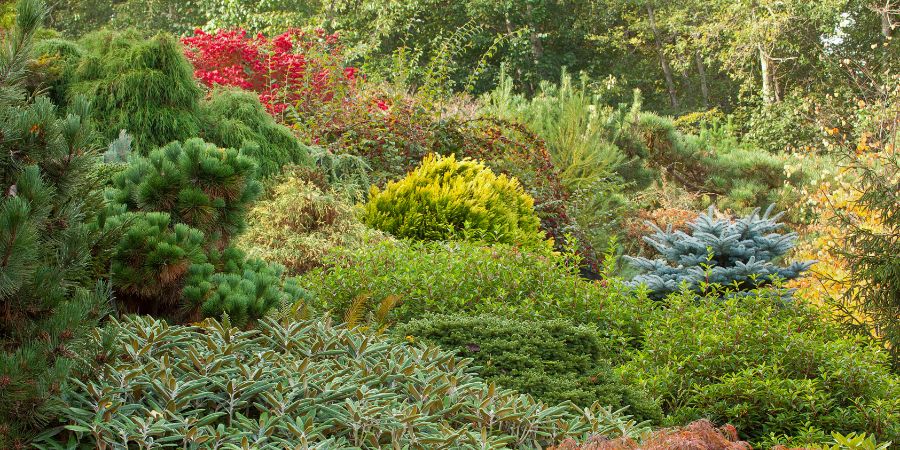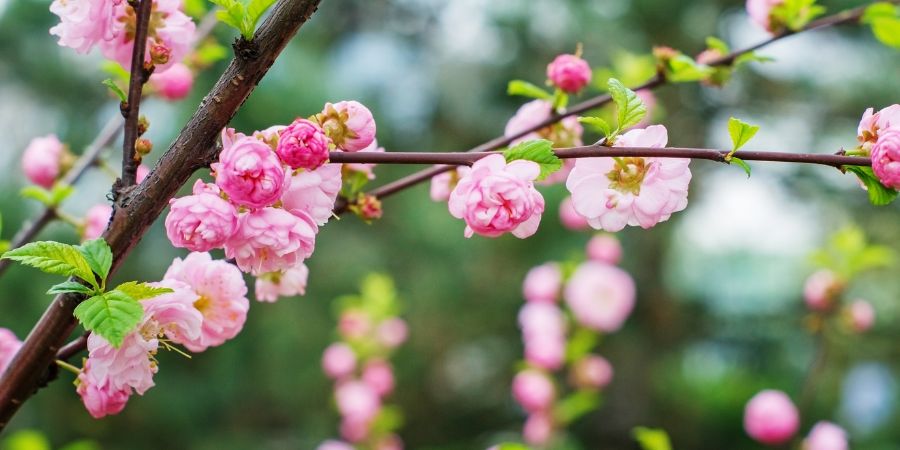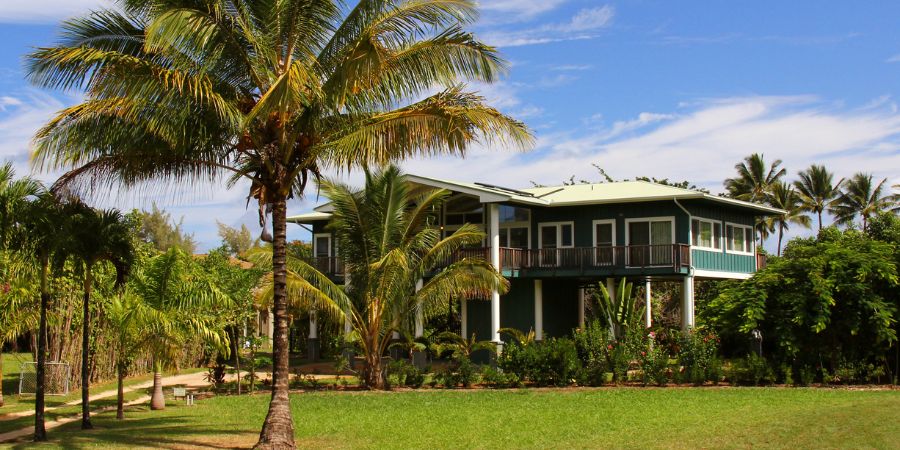How to Apply Milorganite to Your Trees, Shrubs, and Palms
- Milorganite AgronomistJuly 16, 2022
Sometimes customers ask if they can use Milorganite to fertilize anything other than their lawn. The answer is, “Yes!” Most of our faithful customers know Milorganite as a lawn fertilizer, but it can also be used throughout your entire yard, landscape and gardens.
One of the best features of Milorganite is that it’s virtually “goof-proof.” It won’t burn your lawn or anything else in your yard. This makes it an especially good fertilizer for those new to lawn, landscape, and garden care.
What is Milorganite?
Milorganite is a naturally derived, slow-release nitrogen fertilizer. It’s derived from the wastewater treatment process in Milwaukee, Wisconsin. Microbes eat the organic matter and when they’ve had their fill, the remaining material is processed, kiln dried, and bagged as Milorganite. For additional information on Milorganite, check out the video What is Milorganite? by horticulturist and gardening expert, Melinda Myers.
The NPK analysis of Milorganite is 6-4-0. That means there’s 6% nitrogen (N), 4% phosphorus (P), and less than one percent potassium in each bag. Milorganite also contains 2.5% non-staining iron, which customers rely on for the greenest lawns possible. Here’s information on how each nutrient supports plant health. Milorganite also contains a number of micronutrients plants need in very small amounts, but because there is less than 1% of each in Milorganite, they can’t be listed on the bag.

Milorganite feeds the soil, which feeds the plants.
When soil temperature and moisture levels are right, Milorganite is broken down by the thriving ecosystem in your soil and nutrients are then available to plants for up to 8 weeks. Milorganite also adds organic matter to the soil, which helps to condition the soil and retain moisture.
Trees and Shrubs
If you regularly fertilize your lawn with Milorganite, this is often the only fertilizing you’ll need to apply for your trees. Milorganite, with 2.5% iron, is particularly good for iron-loving trees, such as oaks.
When to Apply Milorganite in Cool-season Climates
- Fertilize cool-season trees and shrubs once annually either in early spring or late fall.
- Deciduous and Flowering Trees: Fertilize using Milorganite either in early spring before buds begin to swell or in late fall after the leaves begin to take on fall color and drop. Do not fertilize in mid-summer. This promotes off-season vegetative growth leaving the tree susceptible to winter injury
- Evergreens: Fertilize in early spring or late fall.
- Shrubs: Fertilize shrubs once annually in early spring or late fall. Like trees, avoid mid-summer fertilizer applications.

When to Apply Milorganite in Warm-season Climates
- Warm-season trees and shrubs should be fertilized twice annually, once in early spring and again in fall.
- Trees, shrubs, and groundcovers can be fertilized 4–6 weeks after planting.
- Apply Milorganite in early spring and again in fall, which provides nutrients and facilitates a nice flush of growth in spring.
How Much Milorganite to Use
- For established trees, apply 5 lbs. of Milorganite per inch of trunk diameter—the width of the tree trunk.
- For transplanted trees, mix ½ lb of Milorganite for every foot of tree.
How to Apply Milorganite to Trees and Shrubs
- Established Trees Pour the recommended rate of Milorganite into drilled holes made along the tree’s drip line that is 1” wide x 12” deep and spaced 2 ft apart. (The drip-line is the imaginary ring on the ground below the outer circumference of a tree’s branches.) This also helps to reduce the chance of fertilizer run-off. Alternatively, you can evenly broadcast Milorganite in a band around the drip line of the tree using a broadcast spreader or a large shaker jar. (DIY project?) For deciduous trees, fertilize a few feet outside of the drip line.
- Transplanted Trees Mix ½ lb of Milorganite into the bottom of the hole for every foot of tree height. (A 5 ft tree requires 2.5 lbs of Milorganite = 7.5 cups.) Three months after planting, apply the same amount of Milorganite in a band slightly past the drip line.
Tips for Trees and Shrubs
- Trees generally don’t need additional fertilizer if you regularly fertilize your lawn, unless you see signs of distress or have sandy soil.
- You can apply Milorganite on top of mulch, it just takes longer for the nutrients to reach the tree roots. Alternatively, you can push the mulch aside, work in the recommended amount of Milorganite and redistribute the mulch.
- Water trees along their drip lines instead of at the trunk to prevent root rot.
- For species-specific fertilization information, please contact your local county extension office.
- Here are additional Tips for Keeping Trees and Shrubs Healthy.
Palms
Palm trees require several nutrients and micronutrients, which are nutrients that are needed in only very small amounts. Healthy palms require nitrogen (N), potassium (K), magnesium (Mg), manganese (Mn), and iron (Fe), among others. All are critical to the health of palm trees. Milorganite contains the necessary micronutrients, but because it’s less than 1% of each, it can’t be listed on the bag.
Palms, like all plants, require iron to remain green. Iron deficiency in palms causes the leaves to lack a healthy green color or yellowing of older leaves. Milorganite contains 2.5% non-staining iron to support healthy, green palms.
The most common nutrient deficiency in palms is potassium, which is why an application of potassium is needed in addition to applying Milorganite. Signs of potassium deficiency include yellow spotting, yellow tips, withered or frizzled leaves.
Milorganite is a slow-release fertilizer, which provides nutrients to plants for up to 8 weeks. Slow-release fertilizer is particularly important to use in sandy soils because there’s less of a chance for nutrient runoff.
When to Apply Milorganite to Palm Trees
- Every three months during the growing season, 4x annually.
- Application can start as early as March and as late as October, depending on your local climate.
How Much Milorganite to Use
- Apply 5–10 lbs of Milorganite per palm tree.
How to Apply Milorganite
- Broadcast Milorganite under the entire canopy of the palm, not just the drip line. You can use a spreader or evenly distribute the Milorganite by hand.
- Although Milorganite is non-burning, it’s best to keep all fertilizers 2’ away from the trunks of palms. Palms are tender and can be easily scared or burned when using quick-release fertilizers.
- When planting container-grown palms, mix in 1 lb of Milorganite for every 2 ft of palm. (2 lbs for a 4’ palm, 5 lbs for a 10’ palm, etc.)
Tips for Palms
- For balanced nutrients, potassium supplements should accompany the Milorganite application.
- Have your soil tested to determine which nutrients are deficient. Your local university extension likely provides soil testing for a small fee.
- Apply 2–6” of mulch around the palm, beginning at least 6” from the trunk and extending about 2’.
- Never puncture or damage the trunk of a palm with nails, screws, or a string weed trimmer. Wounds to palm trunks never heal and makes them more susceptible to disease.
- Transplant palm trees in spring or summer.


